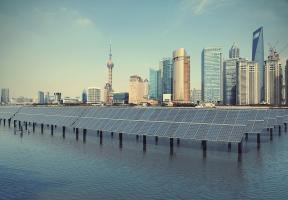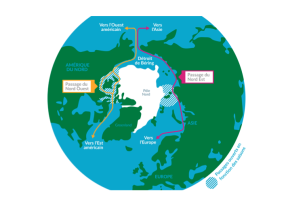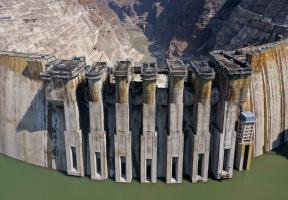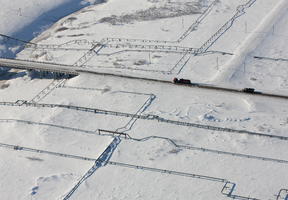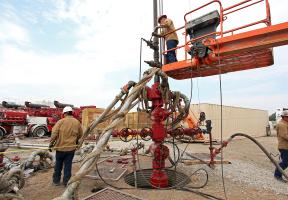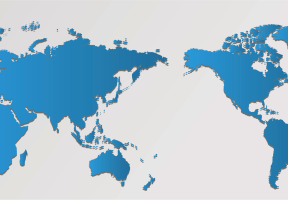International Efforts to Combat Climate Change
10 min read
caused by greenhouse gas emissions is, by its very nature, a global issue. A common strategy and binding targets must therefore be defined on a planetary scale to effectively combat . This has been the aim of many international climate change initiatives, from the Earth Summit in Rio in 1992 to the universal Paris Agreement adopted in December 2015 and the annual COPs.
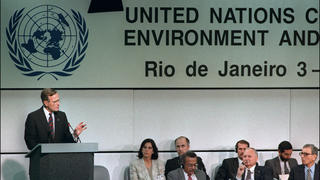
© AFP / D. GARCIA - The Rio Earth Summit in 1992 kick-started the fight against climate change.
1980 – First International Climate Program
The World Climate Research Programme (WCRP) was established in 1980 by the World Meteorological Organization (WMO) in Geneva and the International Council of Scientific Unions (ICSU) in Paris. It gave a critical boost to climate science, particularly in relation to the numerical simulation of atmospheric and oceanic phenomena.
November 1988 – Creation of the IPCC
Starting in the 1970s, climate science matured, building on advances in numerical modeling and satellite imaging. But to understand the causes, challenges and consequences of climate change, scientific knowledge needed to be shared beyond borders. That is why the United Nations (U.N.) set up the in November 1988. The IPCC’s role is to prepare and publish reports that provide a clear and up-to-date picture of the current state of scientific knowledge relating to climate change.
June 1992 – Rio Earth Summit
The international community kicked off the fight against climate change in June 1992 in Rio de Janeiro, Brazil, at the second Earth Summit. Following the conference, 166 countries signed the United Nations Framework Convention on Climate Change (UNFCCC), which acknowledges humanity’s role in global warming. Every year, a Conference of the Parties (COP) brings together all of the countries that have ratified the Convention, which totaled 197 as of 2021. This summit also formalized the notion of based on three pillars: economic, social and environmental.
December 1997 – Kyoto Protocol
This international emissions reduction Agreement was adopted on December 11, 1997, at the third Conference of the Parties, in Kyoto, Japan, but did not come into effect until February 20051. The goal was to reduce emissions of six greenhouse gases by 5.2% versus 1990 levels at some point between 2008 and 2012. Various initiatives were accordingly introduced to curb emissions by the most developed countries.
January 2005 – Launch of the European Union Emissions Trading System
The countries of the European Union took the initiative to set up their own “carbon exchange”. Under the scheme, companies responsible for high levels of carbon emissions are granted a certain number of “emission allowances”. If they exceed their limit, they can buy allowances from other companies that do not need them.
December 2009 – Copenhagen Climate Change Conference
The parties to the UNFCCC met in Copenhagen in December 2009 to forge a new agreement to succeed the . Although often considered a failure, the Copenhagen conference can be credited with officially defining the maximum acceptable increase in global temperature as 2°C above pre-industrial levels. However, the participants were unable to reach a binding agreement on greenhouse gas emissions reduction targets to keep global warming below this threshold.
December 2010 – Cancun Climate Change Conference and Green Climate Fund
At the U.N. Climate Change Conference in Cancun, Mexico, the parties agreed to establish the Green Climate Fund, endowed with $100 billion a year from 2020, to help developing countries adopt initiatives to combat climate change and deforestation. However, non-governmental organizations (NGOs) have expressed their dissatisfaction with the way in which the fund is financed.
December 2015 – Paris Agreement
The COP 21 summit in Paris ended in a compromise that, for the first time in history, every country in the world agreed to. The resulting Paris Agreement sets the international community the goal of limiting global warming to “well below” 2°C in this century. It acknowledges the need for developed countries to provide financial support and technology transfers to developing countries. The accord further stresses the importance of the role played not only by states, but also by cities, regions, businesses and individuals in making this transition.
October 2018 – September 2019 – Three IPCC Reports
IPCC climate experts from around the world published three comprehensive reports in the space of one year. The first deals with the consequences of an average temperature rise of 1.5°C by 2100, the second with the effect of global warming on land, and the third with its impact on the ocean and the . These reports strengthened the international community’s resolve in taking voluntary measures to curb climate change.
December 2019 – European Green Deal
The European Green Deal, adopted by the European Council in December 2019, primarily aims to achieve carbon neutrality by 2050; that is, to ensure that the European Union does not emit more greenhouse gases than it can absorb (known as “net-zero emissions”). Shortly after the deal was announced, China made a similar pledge to have emissions “peak” before 2030 and achieve carbon neutrality by 2060. The United States, which had withdrawn from international efforts under Donald Trump’s presidency, returned to the world stage in early 2021 following the election of Joe Biden.
March 2023 - The 6th IPCC report
Launched in 2021, the IPCC's sixth assessment report will be published in March 2023. It notes an increase in risks ( waves, extreme precipitation, droughts, melting of the cryosphere, etc.). Climate action had to be stepped up immediately, and emissions had to be cut by 45% by 2030 and brought to "net zero" by 2050. The European Parliament also voted to ban the sale of new petrol and vehicles by 2035.
Hottest summer on record in 2023
In September, the European observatory Copernicus announced that the summer of 2023 was the hottest ever recorded on Earth. In places, temperatures exceeded 50°C, with huge fires and extreme weather phenomena.
Source:
1 International treaties are first signed by governments and then must be ratified by their respective parliaments, according to country-specific procedures. It can be a lengthy process.


